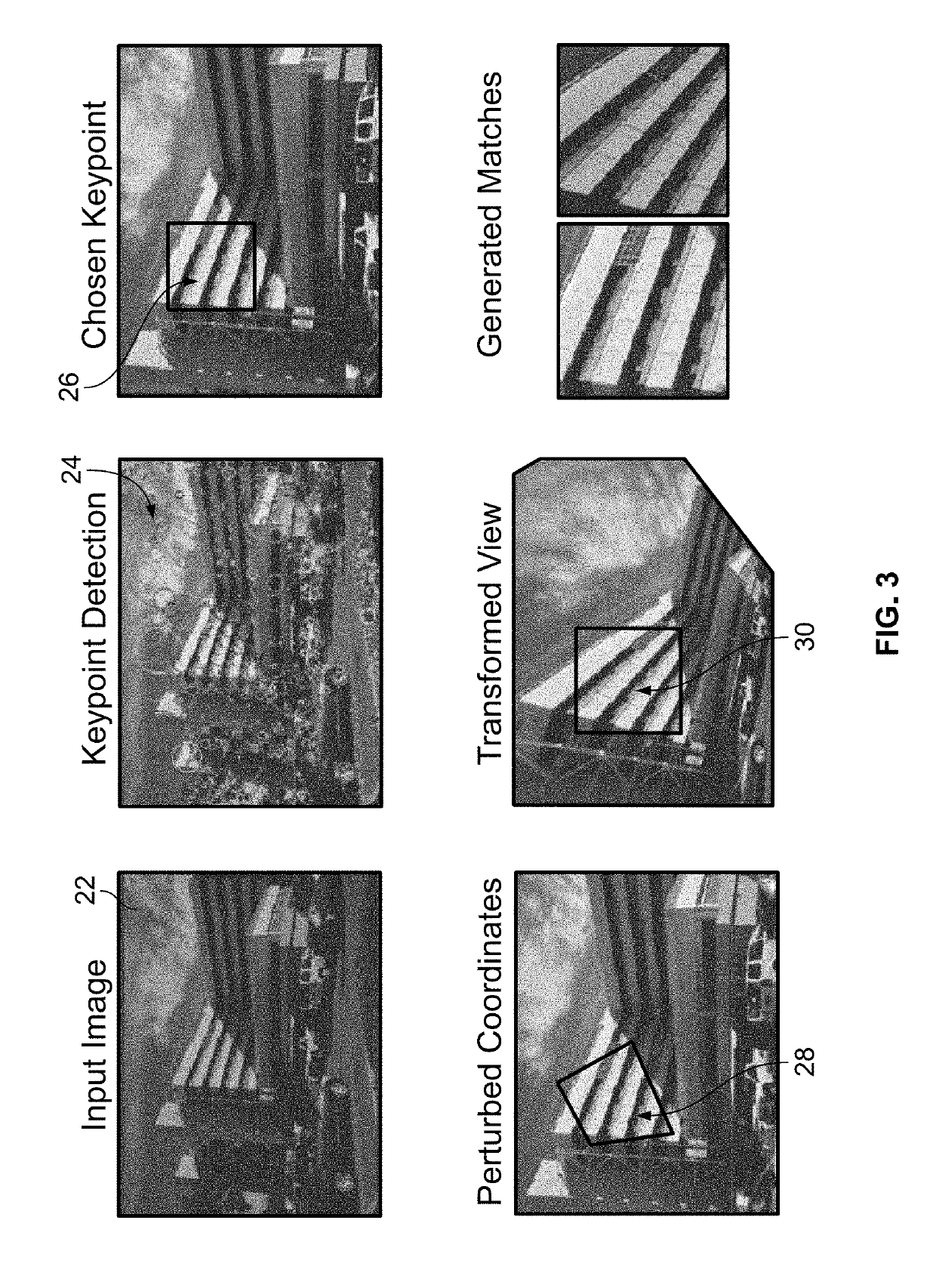Computer Vision Systems and Methods for Machine Learning Using Image Hallucinations
a computer vision and image hallucination technology, applied in the field of computer vision and machine learning, can solve the problems of inability to train and learn the patch description method, the need for huge numbers of matching patches, and the cost of current solutions
- Summary
- Abstract
- Description
- Claims
- Application Information
AI Technical Summary
Benefits of technology
Problems solved by technology
Method used
Image
Examples
Embodiment Construction
[0020]The present disclosure relates to a computer vision systems and methods for machine learning using image hallucinations, as discussed in detail below in connection with FIGS. 1-12. The system and method of the present disclosure can function without requiring large numbers of high-quality training data containing correspondences between different patches taken from different viewpoints. Accordingly, patches from ordinary images can be used to synthesize a whole training set. The synthesis approach generates views of the same patch from different random viewpoints with the use of homographies. The synthesis approach can be paired with a curricular learning framework that automatically guides the neural network through successive levels of difficulty to progressively learn better invariant representations, as will be explained in greater detail below.
[0021]FIG. 1 is a diagram of a system 2 in accordance with the present disclosure for learning patch descriptions from hallucinate...
PUM
 Login to View More
Login to View More Abstract
Description
Claims
Application Information
 Login to View More
Login to View More - R&D
- Intellectual Property
- Life Sciences
- Materials
- Tech Scout
- Unparalleled Data Quality
- Higher Quality Content
- 60% Fewer Hallucinations
Browse by: Latest US Patents, China's latest patents, Technical Efficacy Thesaurus, Application Domain, Technology Topic, Popular Technical Reports.
© 2025 PatSnap. All rights reserved.Legal|Privacy policy|Modern Slavery Act Transparency Statement|Sitemap|About US| Contact US: help@patsnap.com



